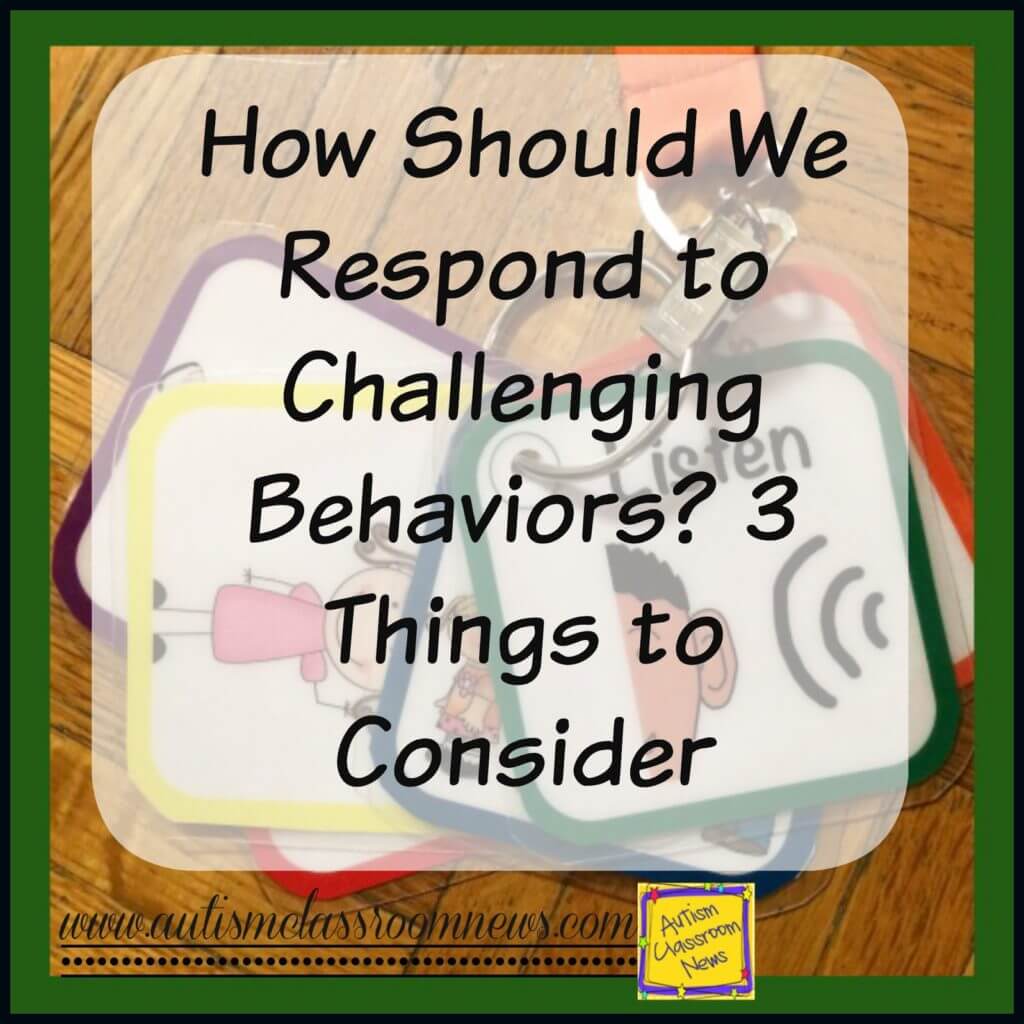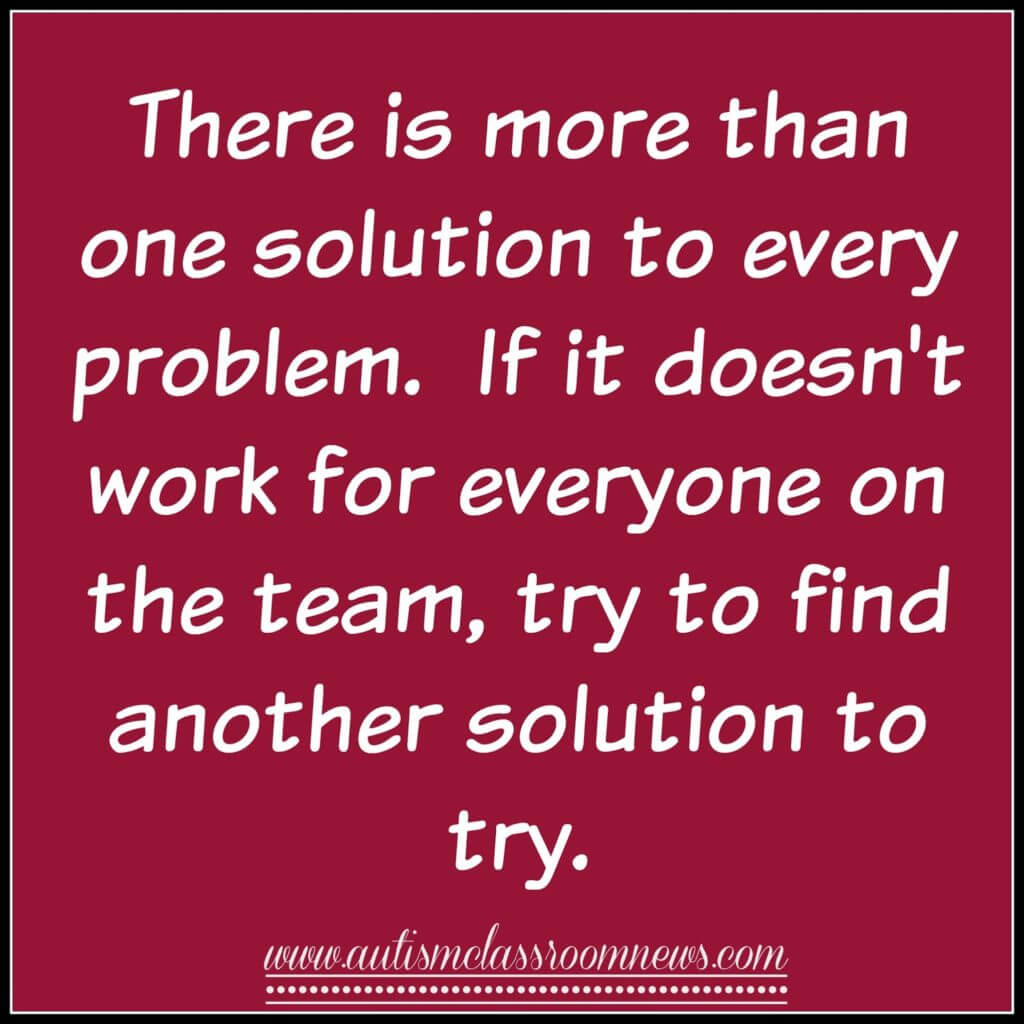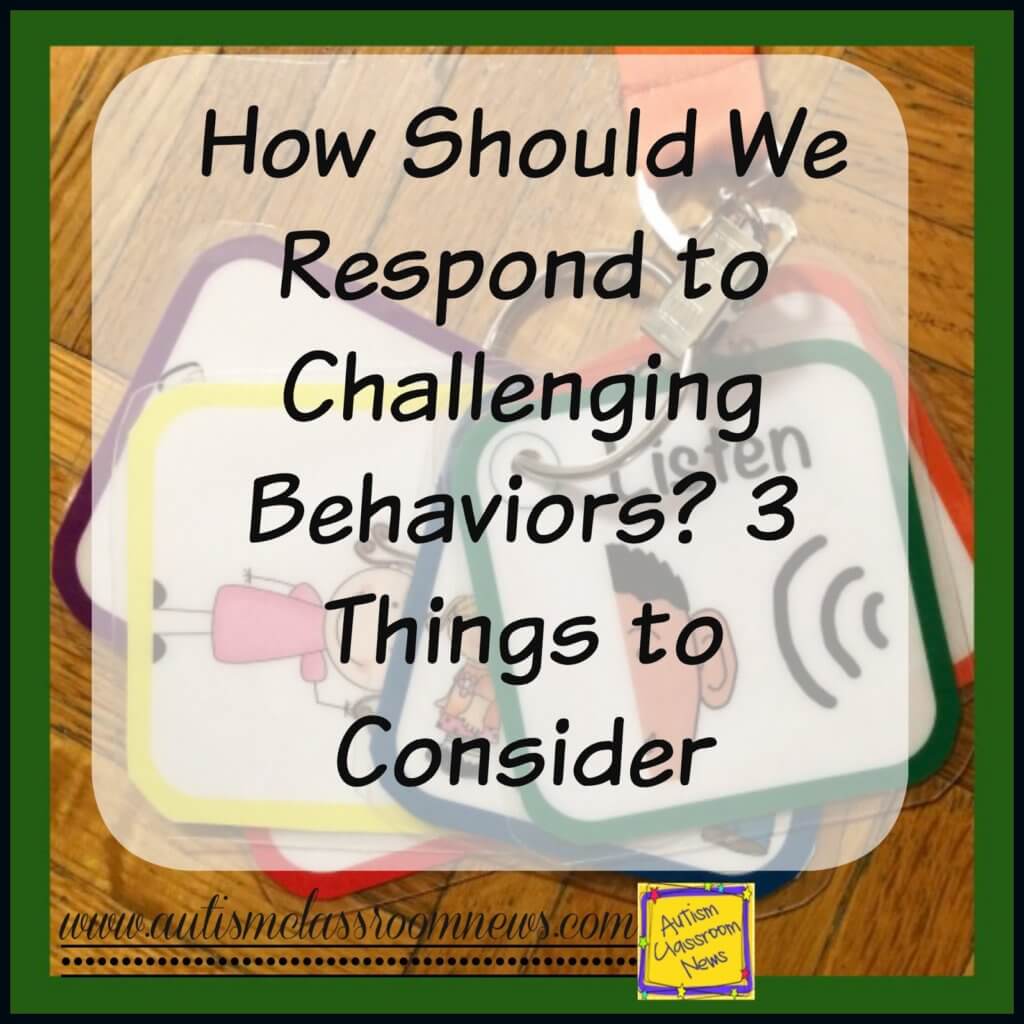Sharing is caring!
 Returning to the series on challenging behavior brings us to the third type of strategies to include in a behavioral support plan: Responsive strategies. No matter what we do when we plan behavioral support, there will be days when it fails and when the behavior occurs. No matter how many antecedent strategies and replacement strategies we use, what reaction the behavior gets in the environment is going to affect it and we need to be prepared for them. Not being prepared and as consistent as possible is sometimes what increased the behaviors in the first place, so it pays to take time to design the response. Here are some things we need to think about in responsive strategies.
Returning to the series on challenging behavior brings us to the third type of strategies to include in a behavioral support plan: Responsive strategies. No matter what we do when we plan behavioral support, there will be days when it fails and when the behavior occurs. No matter how many antecedent strategies and replacement strategies we use, what reaction the behavior gets in the environment is going to affect it and we need to be prepared for them. Not being prepared and as consistent as possible is sometimes what increased the behaviors in the first place, so it pays to take time to design the response. Here are some things we need to think about in responsive strategies.
Assure safety
One of the most critical elements about responsive strategies if the challenging behavior could possibly cause harm to the student or those around them is making sure that everyone is safe. This can take the form of physically blocking someone from running into the street to creating a plan of who to notify and procedures if the individual talks about suicide or hurting others. Many of us don’t like to have the conversations about what to do if this happens and would like to just assume that it won’t. However, it’s better to have the discussion when you aren’t in the middle of a crisis than when you are. I’ll talk more about crisis management and prevention in a future post, but assuring safety when a challenging behavior occurs has to be one of the first priorities of responsive strategies.
Avoid reinforcing the behavior
Another high priority has to be trying to avoid reinforcing the behavior. When we scold the student or point out what they are doing wrong, we might be reinforcing the behavior with attention. When we try remove the activity we might reinforce the behavior with escape. When we interpret the behavior as being some type of communication like a request for an item and respond by just giving them the item we may be reinforcing the behavior. So, we need to make sure that we design strategies that avoid reinforcing the function of the behavior. We may redirect to a more appropriate behavior or redirect to an appropriate way to get the need met without talking about the behavior. We might choose to ignore the behavior. There are pros and cons to all of these and I’ll talk more about them in future posts. The key element here is that we have a consistent response that avoids what has been reinforcing the behavior.
 Strategies can be implemented by all
Strategies can be implemented by all
This is an area of the behavior support plan that needs to be as consistent as possible. Remember that reinforcement is a like a slot machine. If you hit the jackpot just once, you keep on playing! So if one person responds or reinforces the behavior, it will pop right back up again. Keep in mind that not everyone can easily implement all strategies. For instance, if the strategy is to ignore the behavior and someone on the team just can’t keep themselves from reacting, we need to find another strategy because at best the student will have problems around that person. Remember, there is always more than one solution for every problem; we just have to find it.
In future posts I’ll talk more about strategies that work well for responsive strategies, along with some pros and cons about each, so stay tuned. What do you think is important to remember when deciding on responsive strategies?
Until next time,









